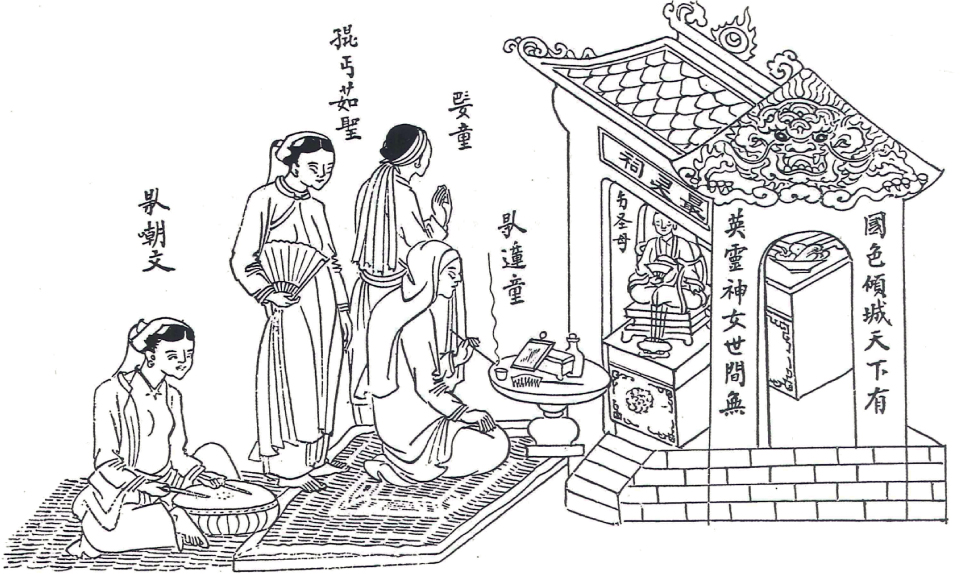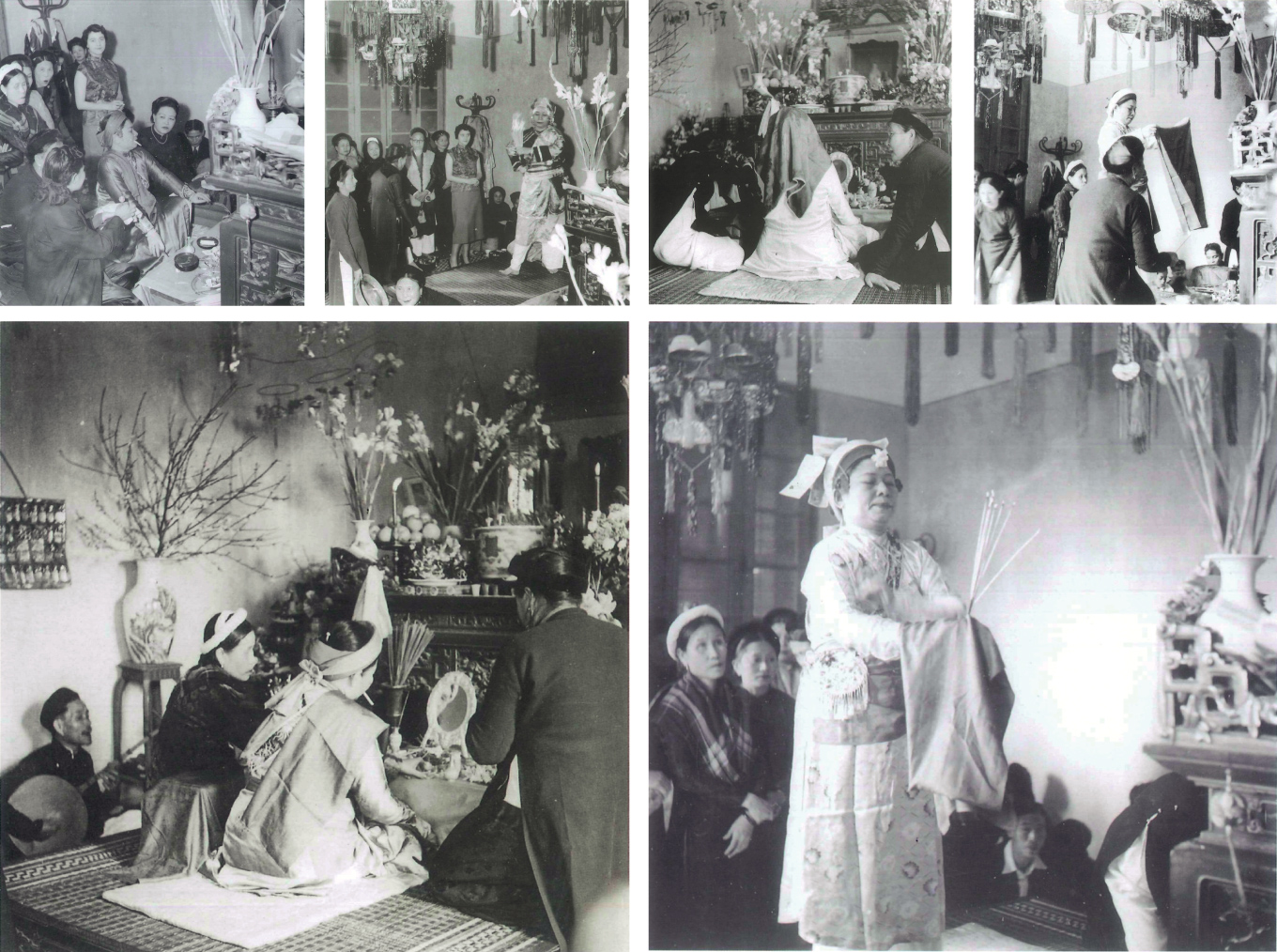

This ‘realm’ provides basic knowledge about ‘Hau Dong’ ritual and helps you get to know what is it before you enter the next ‘realm’.

Credit to Dumoutier in the book Research on the Ethnology of Vietnamese Religion (Excerpt from the report at the Conference on Oriental Studies, 1898, p.300. From left to right: The musician, the worshiper, the servant, the priest.
The priest was blessing the wine cup and scribbling letters in the air, above the wine cup. The tool of the priest mainly include mirrors, combs, betel nut, and wine jars
ABOUT THE ‘HAU DONG’ RITUAL
Dating to the 16th century, Hau Dong centres on a belief in the Mother Goddesses of three realms - forest, heaven and earth. During a ceremony of a Hau Dong ritual, a priest or priestess would mimic the deities by dressing and acting like them. A successful ceremony is the one in which the priest feels the deities' essences but it does not mean the deities' spirits enter the priest's mortal body. As a religious leader authorised to perform the sacred rituals of a religion, especially as a mediatory agent between humans and one or more deities, the ‘thanh dong’ in Vietnamese Mother Goddess Religion is more of the equivalent of a priest rather than a medium or a shaman.
The date of Hau Dong rituals are typically planned to coincide with a festival, anniversary, or the inauguration of a Mother house, although rituals may also be performed at more informal occasions. Rituals are generally held in temples, pagodas or similarly sacred locations.

The main ritual, which may last from two to seven hours, begins with petitions to Buddha and to the deities for permission to carry out the ritual, after which the priest seats in the middle of four assistants, whose job it is to facilitate the priest's incarnation of different deities and spirits, who will help the medium don different costumes to match the particular gods they are incarnating; for example, if a practitioner is acting as a medium for a god who takes the form of a general, he or she may wear a general's robes, and perform a dance incorporating swords or other weapons. The priest may incarnate several gods during one session, changing his or her costume and adapting
his or her movements to each. Specially trained musicians and singers will perform invocation songs to induce a trance in the priest, at which point he or she will be ready to incarnate different spirits. Musicians—singers and instrumentalists—accompany the practitioner, and shift from one musical style to the next depending on which god is being incarnated. When the dance is finished, the audience is allowed to approach the priest (who is believed to be still-possessed by the Goddess) to make offerings, petition the deity being incarnated in exchange for favours, or to have their fortune told. The priest offers sacred gifts in return, often in the form of joss sticks.